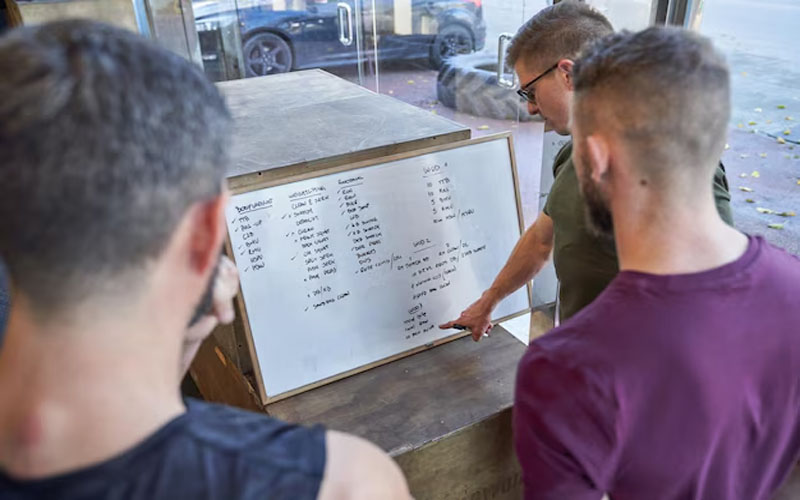In the realm of web and application design, creating an intuitive and efficient user interface (UI) is key to ensuring a seamless user experience (UX). One crucial element of UI design that enhances accessibility and improves interaction is the subdock menu. This feature is gaining traction in modern web and app development, helping designers organize information in a user-friendly and visually appealing way. In this article, we will explore what a subdock menu is, its benefits, various use cases, and best practices for implementing it in design.
What is a Subdock Menu?

A subdock menu is a type of navigation system used in web design or application interfaces. It is typically a secondary menu that “docks” or attaches to a particular part of the screen (often the side or bottom) and provides access to more specific categories or settings. Unlike primary navigation menus that display the main content options, a subdock menu serves as an extension of the primary menu, giving users quick access to additional features or options.
One of the defining characteristics of a subdock menu is its ability to remain fixed or floating on the screen. This ensures that it is easily accessible, no matter what part of the page or app the user is interacting with. Subdock menus often appear when a user clicks or hovers over a particular button or icon, offering a set of further options, or they can be a permanent feature of the UI.
For example, in a design application, the main toolbar might contain options such as “File,” “Edit,” and “View.” A subdock menu could then provide subcategories, like “New File,” “Open,” and “Save” under the “File” section, helping users navigate more efficiently through complex sets of options.
Benefits of a Subdock Menu
The subdock menu offers several key benefits that contribute to enhancing user experience. Below are some of the major advantages of incorporating this feature into your web or application design:
1. Improved Organization and Clarity
One of the primary reasons for using a subdock menu is its ability to organize large amounts of information in a clean and structured way. By categorizing features into primary and secondary options, designers can create a more organized UI that prevents clutter. Users are able to quickly locate the exact features or tools they need, without being overwhelmed by an extensive list of options all at once.
This level of organization ensures that a user does not need to navigate through multiple pages or dropdowns to find a specific setting or feature. Everything is accessible from the same menu or panel, which enhances the overall ease of navigation and clarity of the interface.
2. Space Efficiency
A subdock menu helps optimize the available space on a website or in an application. Since subdock menus can be docked to the side or bottom of the screen, they allow the main content area to remain uncluttered and open. This is especially beneficial for applications or websites with limited space or complex interfaces, such as design programs or dashboards.
By utilizing a subdock menu, designers can create clean, minimalistic layouts that maximize the available space while still offering a wealth of features and options. This space efficiency is crucial for creating user-friendly, modern, and responsive designs.
3. Enhanced Accessibility
Because subdock menus are often positioned in fixed areas of the screen (such as the side or bottom), they are always visible or easy to access. This ensures that users can quickly access the features they need without having to search through different sections of the app or website.
Furthermore, subdock menus can be designed to be responsive, adapting to different screen sizes and devices. For instance, in mobile design, a subdock menu can transform into a compact floating button that expands when clicked, maintaining easy access without taking up too much screen real estate.
4. Improved User Experience (UX)
The ultimate goal of any UI design is to enhance the user experience. By using a subdock menu, designers can streamline the user journey by providing easy access to secondary features. This can reduce friction in navigating an app or website and make the interface feel more intuitive and cohesive.
Whether a user is a novice or an experienced one, having the ability to access advanced features or options without navigating through complicated menus or settings improves the overall UX. This results in higher user satisfaction, increased retention, and better overall usability.
Use Cases for a Subdock Menu

The versatility of subdock menus means they can be effectively applied in a wide range of digital products. Here are some of the most common use cases for subdock menus:
1. Design Applications and Creative Software
One of the most popular use cases for a subdock menu is in design tools and creative software, such as photo editors, graphic design programs, and video editing software. These applications typically contain a variety of complex tools and settings that need to be easily accessible, but without overwhelming the user.
For example, in Adobe Photoshop, the subdock menu might appear as a side panel containing tools for cropping, masking, or adjusting colors. When a user hovers over or clicks a tool in the main toolbar, the subdock menu would show related options specific to that tool. This keeps the workspace organized and reduces the need for users to constantly navigate through deep menus to find the features they need.
2. E-commerce Websites
On e-commerce websites, subdock menus can be used to improve product navigation. Instead of overwhelming customers with a long list of product categories or filters, a subdock menu can provide easy access to product attributes like size, color, and price range without cluttering the page.
For example, when a customer clicks on a product category, a subdock menu could appear, allowing the user to quickly filter items based on their preferences or narrow down search results. This ensures that the shopping experience is intuitive and efficient, leading to a higher likelihood of conversion.
3. Content Management Systems (CMS)
Content management systems, like WordPress or Drupal, also benefit from subdock menus. CMS platforms often feature many tools, such as content creation, user management, and site settings, all of which need to be easily accessible for administrators or users. A subdock menu can offer an intuitive way to navigate between different sections, improving productivity without overwhelming the user.
For example, a CMS dashboard could feature a subdock menu that includes quick access to settings like plugins, posts, and analytics. As users hover over different sections or tools, additional options could appear in the subdock menu, helping them navigate more efficiently.
4. Mobile Applications
In mobile app design, space is often limited, and a cluttered interface can negatively impact usability. A subdock menu can be used effectively to keep essential features within reach while maintaining a clean and minimalistic design.
Many mobile apps, such as social media platforms and task management tools, use subdock menus to provide quick access to functions like settings, notifications, or account preferences. This ensures that users can access secondary options without navigating away from the main screen, improving both convenience and the overall user experience.
Best Practices for Designing a Subdock Menu

When implementing a subdock menu in your design, there are several best practices to ensure it enhances the overall user experience:
1. Keep It Simple and Organized
The purpose of a subdock menu is to provide quick access to secondary features, so it should be simple and easy to navigate. Avoid cluttering the subdock with too many options or complex hierarchies. Categorize features in a way that makes sense, and ensure that the most frequently used options are easily accessible.
2. Use Clear Icons and Labels
Using clear, recognizable icons alongside text labels can help users quickly understand what each option in the subdock menu does. If possible, try to incorporate well-known icons for common actions like settings, help, or search to ensure intuitive navigation.
3. Ensure Responsiveness
Given that users access websites and applications on various devices, it’s essential to make sure your subdock menu is responsive. This means it should adapt to different screen sizes, orientations, and input methods (e.g., touchscreens, keyboards). Mobile users, for instance, should be able to access the subdock menu via a floating button that expands when tapped.
4. Provide Easy Access
A subdock menu should always be accessible without requiring too many clicks. Consider using hover or click interactions to reveal the menu or its suboptions. Additionally, ensure that the menu can be easily closed or minimized if the user no longer needs it.
Conclusion
The subdock menu is a powerful tool in modern web and app design, providing enhanced user experience by offering quick access to secondary features in a space-efficient and organized manner. Whether used in design applications, e-commerce websites, CMS platforms, or mobile apps, subdock menus help keep interfaces clean while making navigation more intuitive. By following best practices and carefully considering the layout and functionality, designers can implement subdock menus that improve both accessibility and productivity for users.
Also Visit: Soonest Convenience: Understanding the Concept and Its Importance in Modern Life
La Reglette: A Comprehensive Guide to its Use and Significance